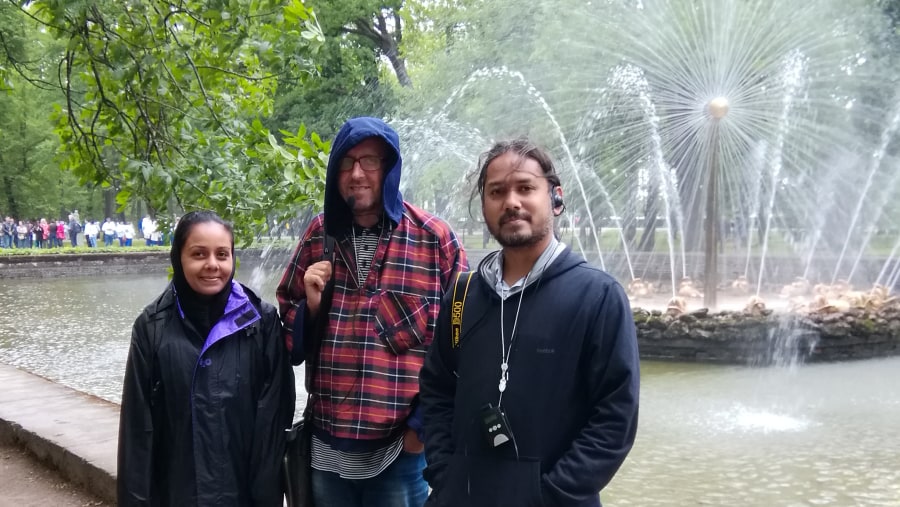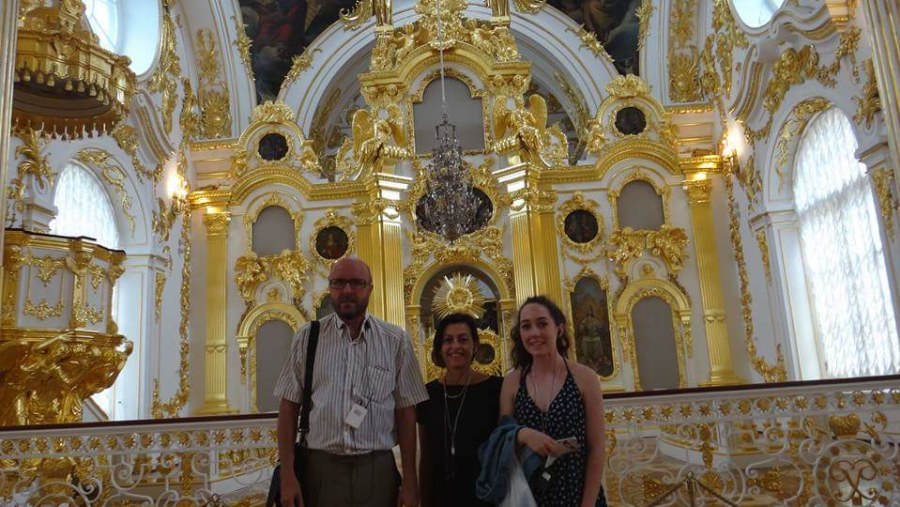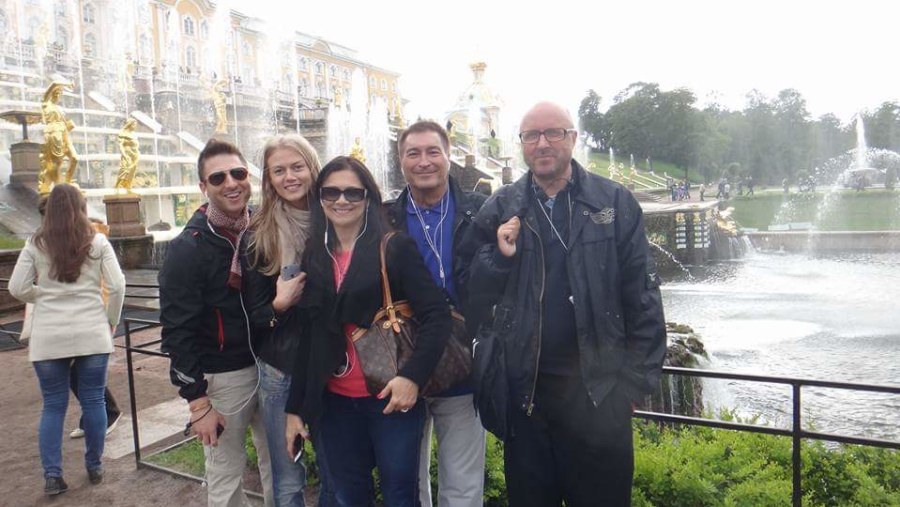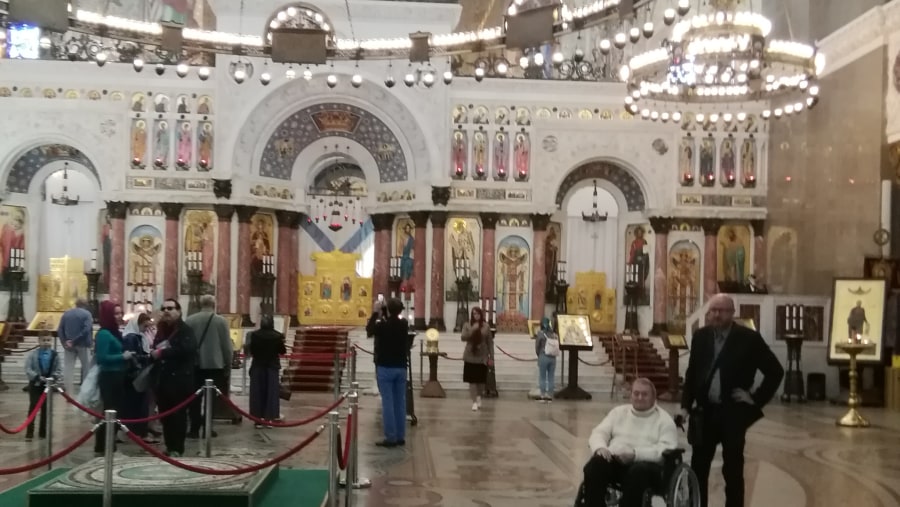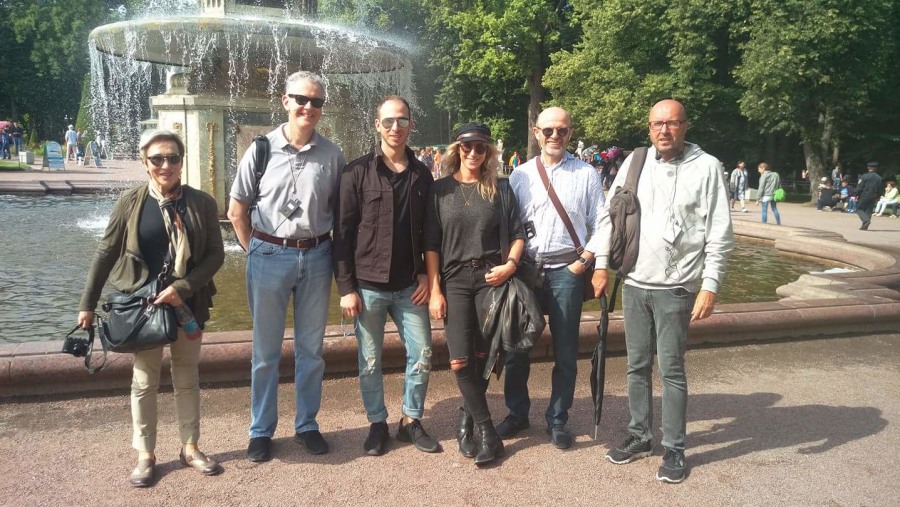10-Hour Culture And History Tour Of Saint Petersburg
Description
Explore the best of Saint Petersburg, starting with a hydrofoil boat to Peterhoff, and visit the stunning Grand Palace. Marvel at the upper Gardens, head towards the Oranenbaum and continue along the coastline of the Gulf of Finland to Kronshtadt Island.
Highlights
- Ride the unique hydrofoil boat to Peterhoff
- Admire the architecture of the Grand Palace
- Pay visits to the Upper Gardens and Oranienbaum
- See the Big Navy Cathedral and harbour area
Itinerary Expand All Collapse All
-
Peterhof - Oranienbaum - Kronshtadt expand_more
- 09:00 Pick up from the hotel by the Saint Petersburg tour guide.
- 09:30 -10:30 Go on a hydrofoil boat ride to Peterhoff.
- 10:30 -12:00 Enjoy the Peterhoff tour of Lower Park.
- 12:00 -12:30 Stop for a coffee break.
- 12:30 -13:30 Tour the Grand Palace and Upper Gardens.
- 13:30 -14:30 Stop for lunch.
- 14:30 -15:00 Drive to Oranienbaum.
- 15:00 -16:00 Embark on the Chinese Palace and Park Tour.
- 16:00 -16:30 Proceed to drive to Kronshtadt Island.
- 16:30 -17:30 Witness the Big Navy Cathedral and harbour area.
- 17:30 -19:00 Ride back to the city.
What's Included
- Saint Petersburg tour guide
What's Excluded
- Entry tickets
- Transportation
- Food
Know before you go
- You would visit places, that are closely connected with Russian maritime history from the time of Peter I, who laid the foundation of the Russian navy base on the Kronshtadt island, which played a significant part during WWII when the Baltic Fleet was fighting Nazi Germany.
- You'll start from Peterhof, which Peter the Great conceived as a seafront official imperial residence and as a gigantic monument commemorating the victory over the Swedish empire and the triumph over nature itself. And you will continue your tour along the coastline of the Gulf of Finland to Oranienbaum and Kronshtadt island by a dam.
- You would be arriving from St. Petersburg by hydrofoil boat to catch the view of the palaces and fountains complexes from the water, as it was intended by Peter himself. After going through the upper garden, you continue on land to the next former royal residences, built-in Oranienbaum. And you finish your tour in Kronshtadt, where you will be visiting Big Navy Cathedral, see the forts, first city port area, Peter I's dry dock and the lighthouse.
- Peter I who started the Northern campaign in 1700 against Sweden that had occupied this territory for the last 100 years and in spite of being defeated initially by Charles XII who was almost alter ego for Peter, being of the same age and character, found himself in marshy lands of the former Great Novgorod city principality. His resilience and ability to learn the lesson and get up after being knocked down gave Peter I the opportunity not only to create from scratches the most advanced Army and the Navy but also build practically on an empty spot a new capital surrounded by fortresses and sea forts defending all approaches from the enemy side.
- Upon arrival, you can start by visiting the imperial yacht museum. You continue through the lower park, which Peter I called his paradise and which with all the constantly flowing cascades and running fountains supposed to outshine Versailles. Along the way, you see the Big Palace, Marly, Hermitage and Monplesir palaces. After visiting the grand palace and going through the upper garden, continue on land to the next imperial residence, built in Oranienbaum.
- For about twelve years after Peter III’s abdication and death, Catherine and Rinaldi worked together on Oranienbaum with wonderful effect. Like Peter, they did not significantly alter the Great Palace (though Rinaldi could not resist leaving his own mark on the grand staircase and on the interiors of the two pavilion wings). But in the Upper Park, to the north of the Great Palace, they joined in creating what has been described as ‘the most miraculous palace of eighteenth-century Russia’. It must certainly be one of the most unapologetically self-indulgent. In the Chinese Palace (Kitáyskiy dvoréts), they seem to have dared each other to greater and greater visual extravagances – the farewell, for both, to Baroque and the beginning of their Classical period. There is not much that is Chinese about this palace except the excuse for it which was to house a fashionable collection of Chinese artefacts. The ceilings were purchased in Italy and originally included a Tiepolo in the Light Blue Hall, which was taken for safety to Peterhof at the beginning of the war whence it was stolen by the Germans. It was replaced, in 1980, by one painted by Torelli. The walls are covered sometimes in chinoiserie, sometimes in sheer Rococo, sometimes (as in the Steklyárusny Kabinét) with pale silk velvet embroidered with bugle beads. The floors Rinaldi’s designs – have to be seen to be believed. In the great Dining Room (Bolshóy zal) are some rare bas reliefs in marble of Peter the Great and the Empress Elisabeth
- You will visit Menshikov Palace, Rollercoaster Pavilion and Chinese palace, which was built by Catherine the Great and is the only one, that was not destroyed during WWII, because it was in a pocket of resistances, that the Germans failed to capture. The origin of this place dates back as usual to Peter I time when he presented this plot of land to his trusted advisor and childhood friend Menshikov, who was briefly running Russia after Peter's death. But was accused of embezzlement and exiled into Siberia. Next hapless owner was grand Duke Peter III, who became a czar according to the wishes of his aunt Elizabeth, but was in his turn dethroned and killed by his wife, Catherine the Great.
- Continue your trip to the other side of the Gulf of Finland, but this time not by the boat, but by land transportation, because you will use the road to the former Kronshtadt island running on top of the protective barrier, which is now connected by it to the mainland on both sides of the Gulf of Finland. You would be able to see the first Russian Navy base located in the city of Kronshtadt, which was closed until recently, and now is opened for visitors.
- See remnants of the first little manmade island, which appeared during winter, when Peter had wooden logs dragged on ice to make crates filled with stones and after they sunk in spring, he had artificial fortification built on top of them, named Kronshlot. And by this structure designed and strategically placed off Kronshtadt island, no enemy ship was able to pass since then, because of the forward-thinking of Peter the Great, who waded through freezing water, sometimes chest-deep to measure navigable depth of the Gulf of Finland and calculated gun range coverage to prevent unobstructed passage of Swedish ships.
- You would be able to see city harbour, dry dock and fortifications, that were designed and personally supervised while under construction by Peter the Great and his closest associates. And after that, you visit the recently restored Main Navy Cathedral with its distinct sea-world theme decoration such as dolphins and sea creatures, built to commemorate Russian maritime glory. Also, you visit navy memorials of WWII heroes, such as of Russian submarine captain Marinesko, who was proclaimed Hitler’s enemy number one after the so-called attack of the century, when he managed to sink the biggest transport carrying the elite of German Navy officers.
Cancellation Policy
For cancellations upto 2 days before the tour -
Refund of 80% of the tour price.Price Details
| Standard | |
| 1 To 4 | USD 100 Per Person |
This is a group tour | |




